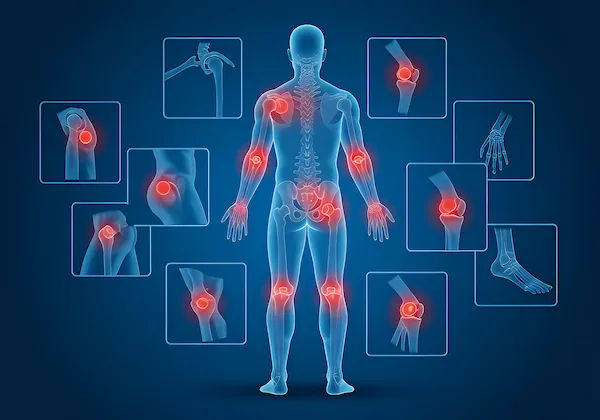Natural Home Remedies to Lighten Dark Underarms Fast
Looking for a dark underarms remedy? Get safe, science-backed underarm whitening tips, what to avoid, and when to see a doctor.

Written by Dr. Shaik Abdul Kalam
Reviewed by Dr. Rohinipriyanka Pondugula MBBS
Last updated on 18th Nov, 2025

Introduction
Dark underarms are common and usually harmless, but they can make you feel self‑conscious—especially in sleeveless clothes or during warm weather. If you’re searching for a dark underarms remedy or safe underarm whitening ideas that actually work, you’re not alone. The good news: simple, consistent home care can often help. Just as important is knowing what to avoid and when to see a professional, because sometimes darkening signals skin irritation or a medical condition that needs attention.
What causes dark underarms?
Understanding why underarms darken helps you choose the right approach.
- Friction and shaving: Repeated rubbing from tight clothing or shaving can irritate the skin, leading to post‑inflammatory hyperpigmentation (PIH), where skin produces excess pigment after irritation or micro‑injury.
- Product irritation or allergy: Fragrance, alcohol, and certain ingredients in deodorants/antiperspirants can cause irritant or allergic contact dermatitis. Repeated irritation can darken the skin over time.
- Buildup of dead skin: The underarm area is warm and moist, which can lead to a buildup of dead skin cells that makes skin look dull or darker.
- Infections and rashes: Intertrigo (inflammation from moisture and friction), yeast, or bacterial conditions like erythrasma can cause discoloration and need specific treatment.
- Acanthosis nigricans (AN): This appears as dark, velvety thickening in skin folds (often armpits and neck) and is commonly linked with insulin resistance, obesity, polycystic ovary syndrome (PCOS), or other endocrine conditions. If present, it’s important to address the underlying cause.
- Less common causes: Certain medications and medical conditions (for example, endocrine disorders) can contribute to hyperpigmentation.
Safety first: “remedies” to avoid
Some internet tips can backfire by irritating delicate underarm skin and making discoloration worse.
- Lemon juice, baking soda, toothpaste, undiluted apple cider vinegar, hydrogen peroxide: These can be harsh, disrupt the skin barrier, and trigger more pigmentation by causing irritation or chemical burns.
- Abrasive scrubs and rough loofahs: Over‑exfoliation damages the skin barrier.
- Unknown “whitening” creams or imports: Some lightening products have been found to contain harmful ingredients like mercury or potent steroids without disclosure. Mercury exposure can be toxic and is unsafe.
- Unsupervised hydroquinone: In many places, hydroquinone is prescription‑only due to potential side effects and misuse. Use only under medical guidance.
Consult Top Specialists
Your safest dark underarms remedy: a gentle, consistent routine
You don’t need harsh bleaching to see improvement. Focus on reducing irritation and encouraging healthy skin turnover.
Gentle daily care
- Cleanse lightly: Wash once daily with a mild, fragrance‑free cleanser. Avoid scrubbing; pat dry.
- Keep the area dry and breathable: Wear loose, breathable fabrics. Change sweaty clothes promptly. Consider moisture‑wicking materials for workouts.
- Moisturize: Apply a simple, fragrance‑free moisturizer after bathing to support the skin barrier.
- Look for ingredients like ceramides, glycerin, or petrolatum. If you prefer something lighter, an aloe‑based gel can soothe while adding a bit of hydration.
Smarter hair removal
Trim or use an electric trimmer if shaving irritates your skin.
If you shave:
- Soften the hair with warm water first.
- Use a shaving gel/cream to reduce friction.
- Shave in the direction of hair growth with a sharp, clean blade.
- Rinse and moisturize after.
- If waxing causes irritation or darkening, pause it. Consider discussing laser hair reduction with a dermatologist if hair removal consistently triggers PIH.
Exfoliate carefully (1–2 times per week)
- Gentle chemical exfoliants are safer than scrubs for this delicate area.
- Start low and slow: Try low‑strength alpha‑hydroxy acids (AHAs) like lactic acid (about 5%) or glycolic acid (≤5%), or a beta‑hydroxy acid (BHA) like salicylic acid (0.5–2%). Patch test first (inside elbow for 24–48 hours).
- Frequency: Begin once weekly. If well tolerated after two weeks, increase to twice weekly. Over‑exfoliation delays results and can worsen darkening.
- Expect gradual change: Consistent use for 6–12 weeks is often needed to see visible brightening with minimal irritation.
Underarm whitening ingredients with the best evidence (for home use)
These over‑the‑counter options can target pigmentation and calm inflammation. Introduce one at a time and patch test first.
- Niacinamide (vitamin B3, about 4–5%): Helps reduce hyperpigmentation and strengthens the skin barrier with a low risk of irritation. Can be used daily.
- Azelaic acid (10–15%): Addresses PIH and ingrown‑related discoloration; also anti‑inflammatory. Start every other night, then increase as tolerated.
- Vitamin C (ascorbic acid or stable derivatives, ~10–20%): Antioxidant that can brighten uneven tone. Some formulas can sting; start slowly.
- Licorice root extract (glabridin) or kojic acid: May help by reducing melanin production; best used in well‑formulated, reputable products and at low frequency to minimize irritation.
- Soothers: Aloe vera gel or colloidal oatmeal lotions can calm irritation that leads to darkening, making them good adjuncts.
Tip: Use these activities at night after cleansing and follow with a gentle moisturizer. In the daytime, if your underarms will be exposed to sun (e.g., sleeveless outdoors), apply sunscreen to minimize further darkening.
Make deodorants work for you
- Choose fragrance‑free or “hypoallergenic” options if you suspect irritation.
- If antiperspirants sting, look for lower aluminum concentrations or try a gentle, fragrance‑free deodorant without antiperspirant until the skin calms.
- Patch test new products on the inner arm first for 1–2 days.
Lifestyle checks that make a difference
- Weight and friction: If friction from skin folds contributes to irritation, even modest weight loss can reduce rubbing and help discoloration fade over time.
- Sweat management: For exercise, use breathable fabrics, shower soon after, and dry the area well. Consider a thin layer of a barrier product (e.g., zinc oxide or petrolatum) on days you expect heavy friction.
- Watch for rashes: If you notice persistent redness, itching, odor, or scaling, see a clinician—yeast or bacterial conditions need targeted treatment.
When to see a healthcare professional?
- Darkening is sudden, severe, or accompanied by thick, velvety skin in folds (possible acanthosis nigricans).
- You have itching, pain, odor, or rash (possible infection or dermatitis).
- You have risk factors for insulin resistance (e.g., family history of diabetes, weight gain, irregular periods/PCOS) or skin darkening appears on the neck, groin, or other folds.
- No improvement after 8–12 weeks of consistent, gentle care.
- You’re considering prescription options like hydroquinone, retinoids, or in‑office procedures (chemical peels, lasers). These can be effective when supervised by a dermatologist.
A simple weekly plan to start today
Mornings
- Cleanse gently; pat dry.
- If your underarms are in the sun, apply a small amount of broad‑spectrum sunscreen (SPF 30+).
- Use a fragrance‑free deodorant/antiperspirant that doesn’t sting. If it does, try switching to a gentler formula or skip on days at home.
Evenings
- Cleanse gently after sweating or at day’s end.
Apply one brightening ingredient (rotate as needed):
- Mon/Wed: Niacinamide serum (4–5%), then moisturizer.
- Tue/Fri: Azelaic acid (10–15%), then moisturizer.
- Thu: Rest night (moisturizer only).
- Sat: Gentle AHA or BHA exfoliant (low strength), then moisturizer.
- Sun: Vitamin C (if well tolerated) or rest at night.
- Adjust frequency based on tolerance. If any stinging or redness persists beyond a few minutes, reduce use or take extra rest days.
What does “fast” realistically mean?
Skin turnover and pigment pathways take time. With consistent, non‑irritating care, many people start to notice a smoother, slightly brighter look in about 6–8 weeks, with continued improvement by 12 weeks. Pushing for faster results with harsh methods usually delays progress.
Consult Top Specialists
Consult Top Specialists

Ms. Malabika Datta
Dietician
17 Years • Msc. in Dietetics & Food Service Management
Kolkata
Dr Utsa Basu Clinic, Kolkata
(25+ Patients)

Ms Manisha Patil
Dietician
25 Years • B.A.S.M., M Sc Food & Science and Nutrition , ADND. CCHA . PGDHM
Pune
Apollo Clinic, Nigdi, Pune

Ms Malabika Datta
Dietician
19 Years • Bsc (Clinical Nutrition & Dietetics), Msc (Dietetics & Food Service Management)
Kolkata
Malabika’s Diet Clinic, Kolkata

Ms. Sushma Jaiswal
Dietician
42 Years • M.Sc.(Food & Nutrition)
Bengaluru
Swasthya Nutrition, Bengaluru

Ms. Sreeparna Dey Dhara Deb
Dietician
10 Years • DNHE
Bansdroni
Siddhita Healthcare., Bansdroni
Consult Top Specialists

Ms. Malabika Datta
Dietician
17 Years • Msc. in Dietetics & Food Service Management
Kolkata
Dr Utsa Basu Clinic, Kolkata
(25+ Patients)

Ms Manisha Patil
Dietician
25 Years • B.A.S.M., M Sc Food & Science and Nutrition , ADND. CCHA . PGDHM
Pune
Apollo Clinic, Nigdi, Pune

Ms Malabika Datta
Dietician
19 Years • Bsc (Clinical Nutrition & Dietetics), Msc (Dietetics & Food Service Management)
Kolkata
Malabika’s Diet Clinic, Kolkata

Ms. Sushma Jaiswal
Dietician
42 Years • M.Sc.(Food & Nutrition)
Bengaluru
Swasthya Nutrition, Bengaluru

Ms. Sreeparna Dey Dhara Deb
Dietician
10 Years • DNHE
Bansdroni
Siddhita Healthcare., Bansdroni
More articles from General Medical Consultation
Frequently Asked Questions
What’s the fastest safe dark underarms remedy?
There’s no instant fix, but the fastest safe route is reducing irritation (gentle cleansing, smart hair removal, breathable fabrics), adding a mild chemical exfoliant 1–2 times weekly, and using a proven brightener like niacinamide or azelaic acid consistently for 8–12 weeks.
Are lemons, baking soda, or toothpaste good for underarm whitening?
No. They commonly irritate the skin or disrupt its pH, which can worsen darkening. Stick with gentle, evidence‑based products.
Can deodorant or antiperspirant cause dark underarms?
They can if they irritate your skin. Fragrance, alcohol, or sensitivity to certain ingredients can trigger dermatitis and PIH. Choose gentle, fragrance‑free formulas and patch test new products.
How do I know if my dark underarms are from a medical issue?
If the skin is dark, velvety, and thicker—especially in folds like the neck or groin—acanthosis nigricans are possible, which is often linked to insulin resistance. See a clinician for evaluation and guidance.
Which underarm whitening ingredients should I look for at home?
Niacinamide, azelaic acid, vitamin C, and gentle AHAs/BHAs are common options. Introduce one at a time, patch test, and use consistently. Avoid unknown “whitening” creams that may contain harmful substances.


.webp)

